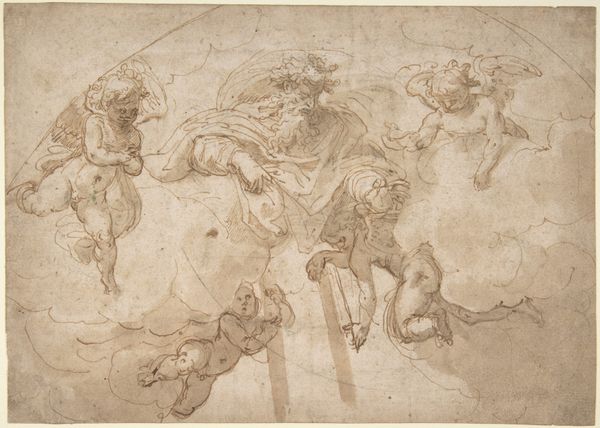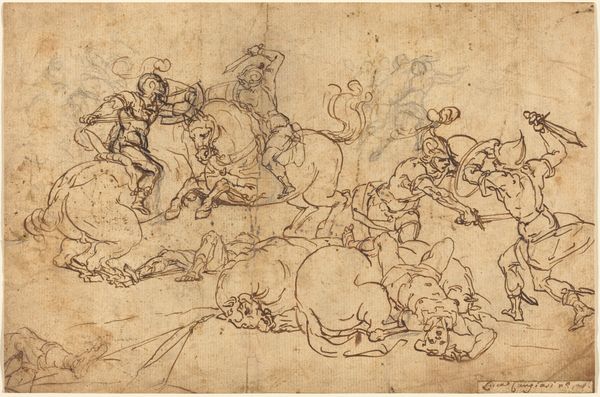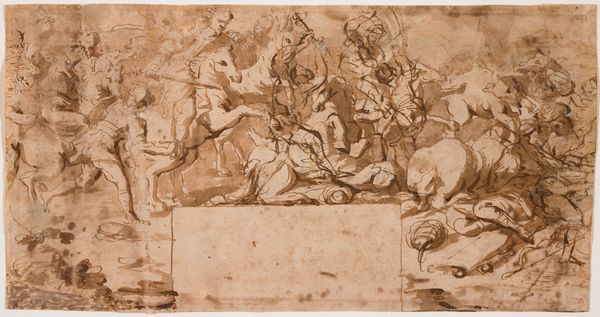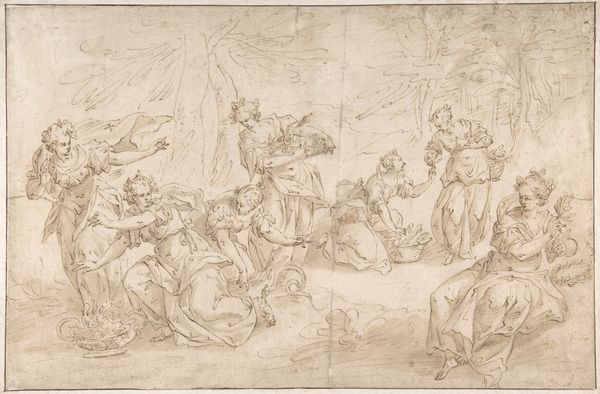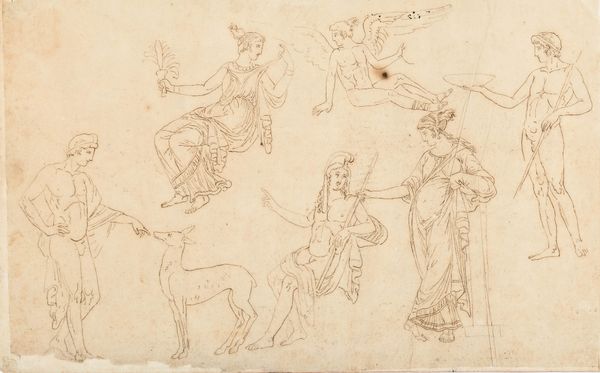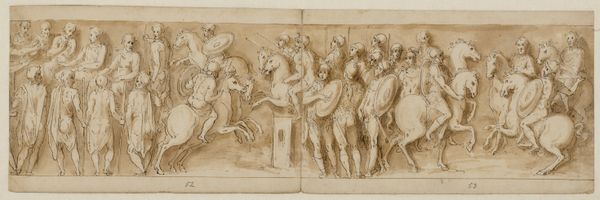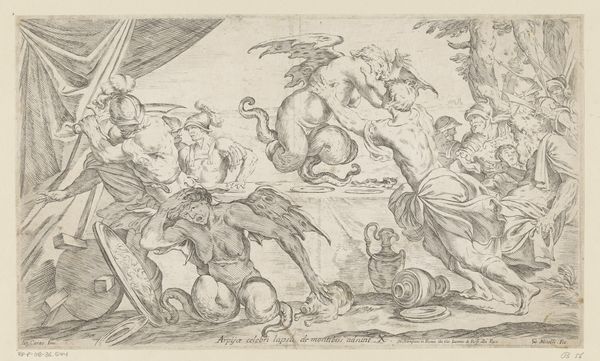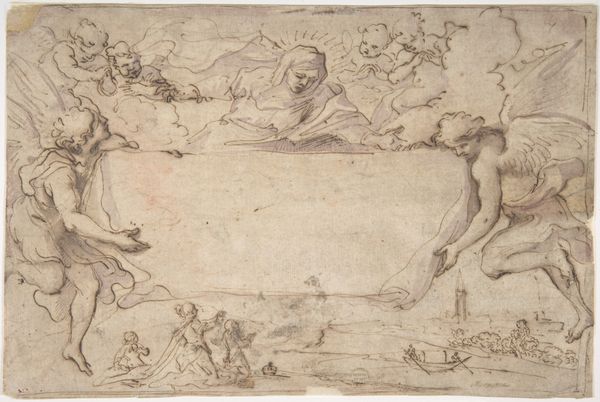
Seahorses, tritons, and putti riding on dolphins 1570 - 1654
0:00
0:00
drawing, ink
#
drawing
#
allegory
#
ink painting
#
figuration
#
11_renaissance
#
ink
#
watercolor
Dimensions: 184 mm (height) x 285 mm (width) (bladmaal)
Curator: This drawing, dating roughly from 1570 to 1654, is attributed to Giuseppe Alabardi. It's entitled "Seahorses, tritons, and putti riding on dolphins," and the medium appears to be ink on paper. What are your initial thoughts? Editor: My first impression is a kind of joyous chaos. The figures tumbling over each other, a swirl of movement. It's quite playful, and full of very classical symbolic figures. Curator: Absolutely. The classical allegory is key here. Consider how the representation of tritons and putti became widespread during the Renaissance. It signaled a humanist interest in recovering and reinterpreting ancient mythology, moving away from strictly religious imagery. Editor: And each character has a loaded historical weight. Dolphins, for instance, were associated with salvation, guidance, even Christ himself. And, of course, these mischievous putti remind one of classical cherubs of romantic love or sometimes divine inspiration. What statement were these figures attempting to convey in that period, considering also its public role of art? Curator: It's possible that these kinds of images spoke to a renewed cultural optimism that spread from Italy. This image probably helped people align themselves with a vision of restored glory or timeless virtue. Drawings such as this one often circulated within artistic workshops, informing public tastes of the era, where mythic or allegorical subject matter signaled one’s classical learning. Editor: Yes, the drawing seems like an aspirational vision in a way. What strikes me, too, is how effectively it conveys movement despite the static medium. The energy in these forms is really fascinating and engaging. The figures are actively gesticulating, creating this sense of joyful activity. Curator: It reflects how art helped spread certain ideals of knowledge and cultural authority at a fascinating transitional point in European history. The symbolic weight of the art creates an image of enduring ideals which continue to resonate today. Editor: Indeed. It highlights how images carry powerful, emotionally charged meanings. That is what is amazing with classical and pre-classical symbol-oriented art forms, they remain highly charged and resonant to this day.
Comments
No comments
Be the first to comment and join the conversation on the ultimate creative platform.

